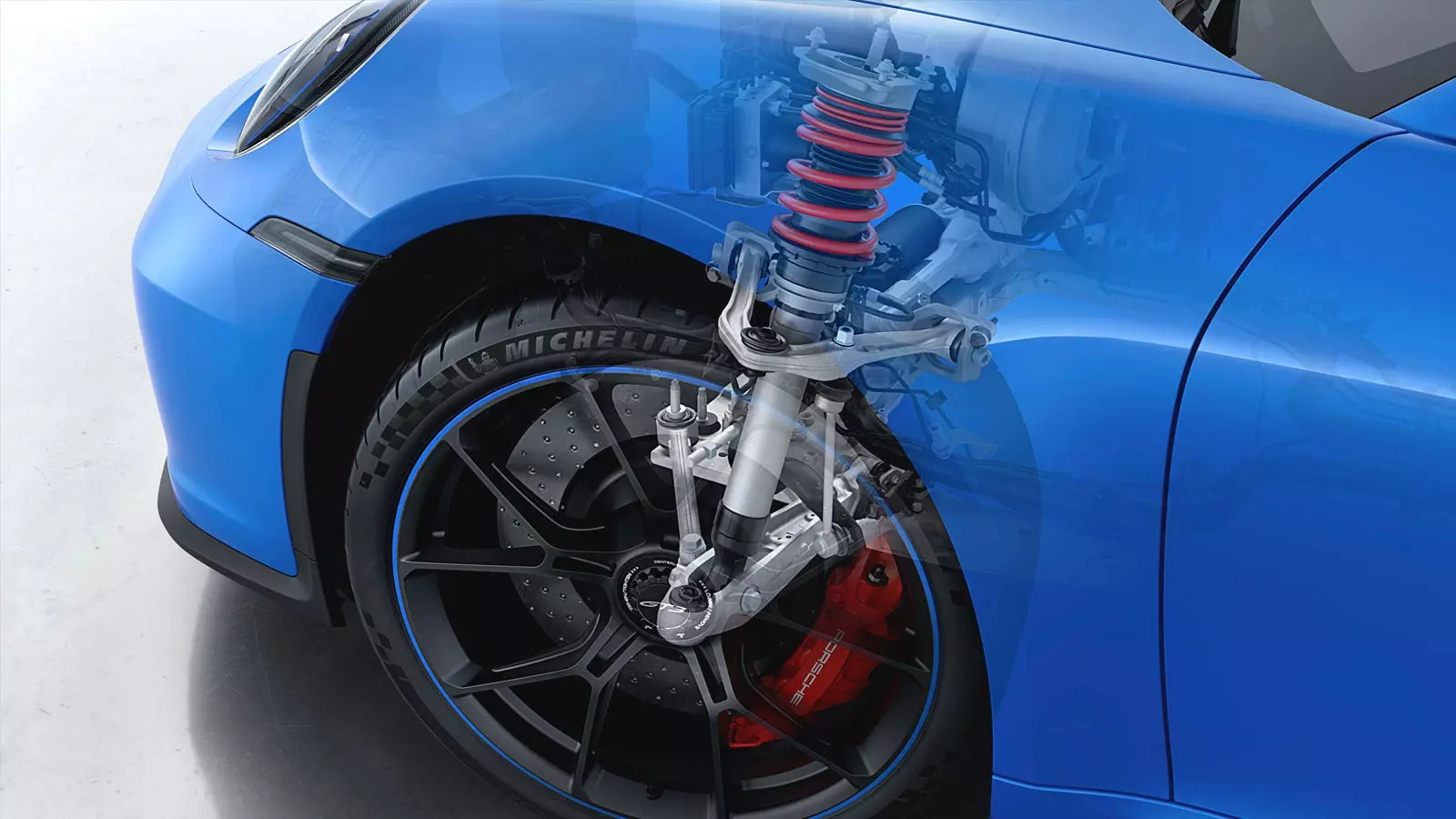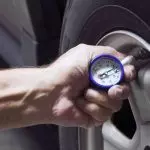A new Porsche 911 GT3 has hit the road – it’s a very cool car! While it’s based on the new 992 platform, there is much carryover from the previous GT3; same 4.0-liter 9,000 RPM flat-six with new emissions stuff, same seven-speed dual-clutch gearbox, and six-speed manual. One significant change, however, is the car’s brand new double wishbone front suspension.
Since double wishbones seemed to get a lot of mentions in the GT3’s press coverage, I wanted to expound on it, how it works, what cars have used it, and how it compares to another common suspension setup: MacPherson struts.
What is Double Wishbone Suspension?
For those who need a little contextual primer, don’t worry, it’s very simple. Double wishbone is one of two common types of suspension arrangement on modern cars, the other being a bit of ingenious engineering called the MacPherson strut. Both do the exact same job: Rigidly locating the front or rear wheels of a car. They do that job slightly differently however, and double wishbone suspension isn’t as exotic as you might believe.
Double wishbone is self-explanatory to a point; it has two wishbones (also known as control arms) that locate the wheel. These control arms are kind of parallel, but for complex reasons are usually at different angles to each other. One control arm attaches to the hub close to the top of the wheel that’s called the upper control arm, and another control arm attaches to the bottom of the hub and that’s the lower control arm. Together, they can dictate fairly accurately how the suspension geometry will change as the suspension compresses and extends thanks to the control arms having joints at both ends that let them articulate. Fun, right?
If you’re more of a visual learner, there’s a classic Engineering Explained whiteboard-rundown on double wishbone suspension you can peek at right here:
What’s a MacPherson Strut?
A MacPherson strut setup is much simpler, it just has a lower control arm. Instead of an upper control arm, the actual shock absorber and spring (called a strut assembly) act as the upper control arm but without any articulation. Functionally, the strut is fixed in its geometry and acts mostly like a locating brace for the lower control arm ball joint to pivot around. Because of this, the lower control arm decides all of the geometry of the suspension with no help from an upper arm, and this does limit the adjustability and freedom of choice with suspension design.
Kinematics is the engineering word for how objects move. In this case, we’re talking about how the double wishbone or MacPherson strut changes its geometry over the entirety of suspension travel. It doesn’t just control camber (how much the top of the wheel leans in or out from the body of the car) or controls how the car adjusts toe (how much the front of the wheel pokes in or out from the body of the car), it has a huge effect and how the steering feels and reacts to bumps and compression.
Stuff like scrub radius, caster, kingpin axis inclination and other extremely geektastic suspension terms all matter just as much as camber and toe. The primary advantage of double wishbone is most certainly its ability to control camber and scrub radius. I’d love to dive into what scrub radius means but this is it in two sentences: it’s the difference between the center of the tire and the point on the tire where the car is actually steering from. The steering axis doesn’t actually rotate around the center of the tire and can actually be offset closer to the edges of the tire, that distance is the scrub radius.
It’s commonly accepted that a double wishbone suspension is always better but that’s not necessarily true. What matters more is how either setup was engineered and developed. It is much more difficult to make a MacPherson strut gain camber as suspension compresses than a double wishbone, but it is completely possible.
And since we referenced an old Jason Fenske video to visualize double wishbone suspension, you might as well check out his rundown on MacPherson struts too! Fenske’s gotten a lot livelier in more recent clips, but this oldie is still information-dense and articulate:
Which Cars Use Which Type of Suspension?
Some of the greatest sports cars of all time have MacPherson struts. Every single 911 up until the newest GT3, and almost every BMW M car until the 2012 F10 M5 were quite happy with MacPherson. Most of your favorite hot hatches like all VW GTIs, Ford Fiesta and Focus STs, post-2006 Honda Civic Si, and even the unobtanium Toyota Yaris GR are MacPherson. Honorable mentions include the Subaru BRZ, Subaru WRX, and the Mitsubishi Lancer Evo.
On the same spectrum, cheap and cheerful cars are double wishbone and very proud of it. ‘90s Honda Civics all boast an excellent double wishbone setup, the Mazda Miata has been double wishbone since its debut, modern Nissan Z cars, and a ton of luxury cars all have a casual double wishbone. Hell, every Audi contemporary to any of the golden-era Bimmers were double wishbone and it did them zero favors in handling compared to the “lesser” MacPherson’d Bavarians.
Which Suspension Design Is Better?
Apples-to-apples double wishbone is better, no contest. But car design is full of compromises, budgets, and other soul-crushing stuff that doesn’t allow an engineer to optimize performance. It is much easier to make a double wishbone behave favorably compared to a MacPherson strut, but it is heavier, takes up a lot more space, and costs more money to develop and manufacture. Absolutely terribly handling cars have double wishbone, too… and nobody seems to cite them. Basically, all old American cars including the Crown Victoria are double wishbone.
Once we waft through swamps of real-life engineering challenges the truth is this: you can achieve very similar results with either setup with clever engineering and tuning. I’ve heard exactly zero people beg for their E46 M3 to have double wishbones, because it has excellent suspension. I’ve heard exactly zero people pine for double wishbones on their Porsche 911 because it has exceedingly excellent suspension.
It really gets fun because you can optimize suspension with the aftermarket working around design limitations with good parts and some trial and error.
The truth of the matter is that the gains between the two setups are minute, but tangible. In most cars, most people might not feel a difference at all. But on a car that has been honed to perfection like a 911 GT3 you’ll feel the difference at the very extremities of its capabilities on a track or empty canyon road. I’m not saying it isn’t better, because from what my colleagues are saying, the front end of the new GT3 is planted as can be. The potential of the new setup is much higher than the MacPherson strut, no doubt.
Naturally, you may be wondering, if the Honda Civic had this setup in the ’80s, then why didn’t the 911 get it sooner? It’s because it’s a truly minute iteration in a huge tapestry of things that contribute to the car being better. Those two control arms are certainly doing plenty of work, but they aren’t doing all of the work, discrediting the spring rates, dampers, sway bars, and other geometric tweaks that were undertaken and not to mention better tires being invented since the last GT3 Nürburgring time.
I will say this: It is neat to see the development going into this minutiae. Many of those old double wishbone heroes are dead and gone and have converted to struts in the name of cost savings. The GT3 goes against the trend and that is very cool. Just don’t believe that double wishbones are the second coming in the flesh because a lot more goes into it than that. In fact, the 992 GT3 uses a pretty old-school-looking in-wheel double wishbone without the fancy dual ball joints that many newer cars have adopted. I’m sure it will allow Porsche to homologate better race cars and leave a lot of overhead for the future GT cars, however.
When it all comes down to getting the tires on the road at the correct angles, what matters more is how good the engineering is behind any given suspension setup, rather than the physical parts themselves. Optimization, tuning, tires, and bushings contribute to the dynamic whole of any given car. Those old double wishbone Civics with some choice mods are some of the fastest things around a track. Maybe with some choice mods, the new GT3 could match the raw mobbage… I jest! All I’m saying is, the 991 GT3 was no slouch for its MacPherson strut setup, nor will any of your cars either.
Double wishbone is significant. But, it is not the deal-breaker and nor should it be for any machine. Get some driver training first, then the difference will really be felt. For now, keep enjoying your perfectly good MacPherson cars and give those double armed elitists a run for their money!









